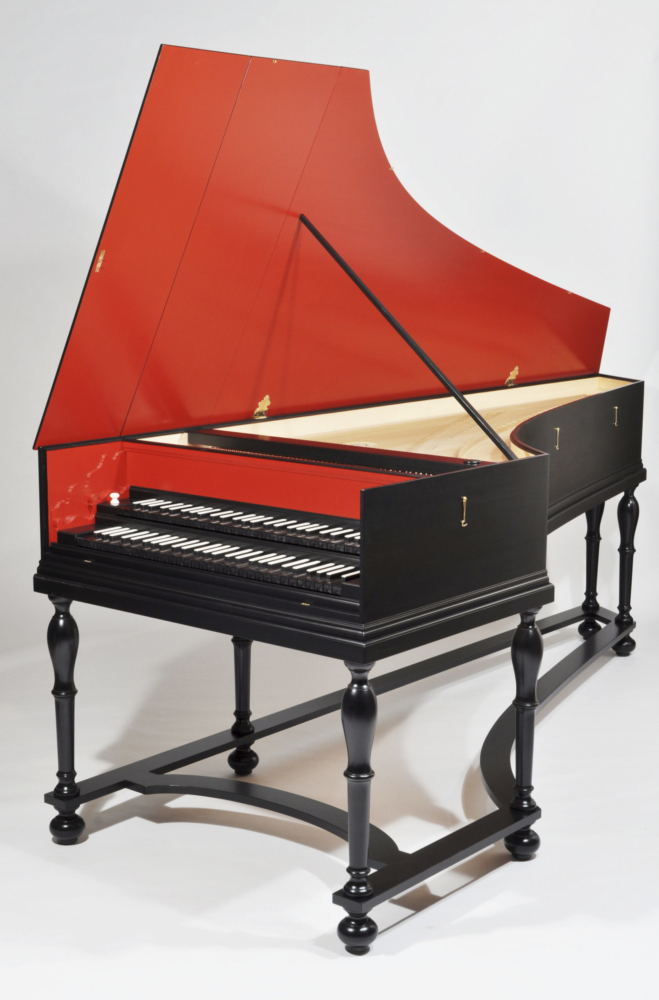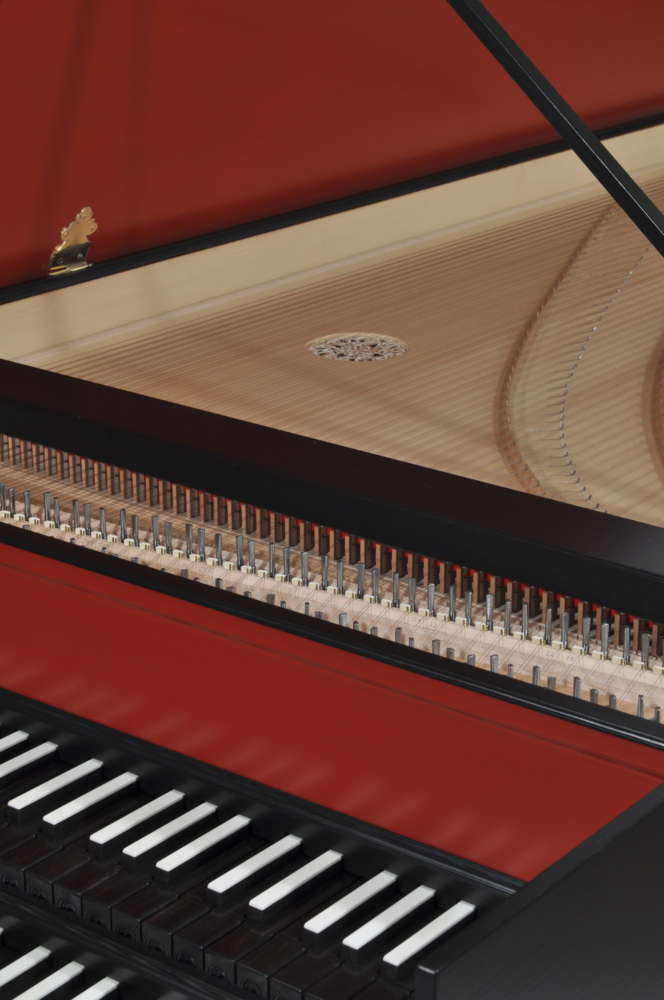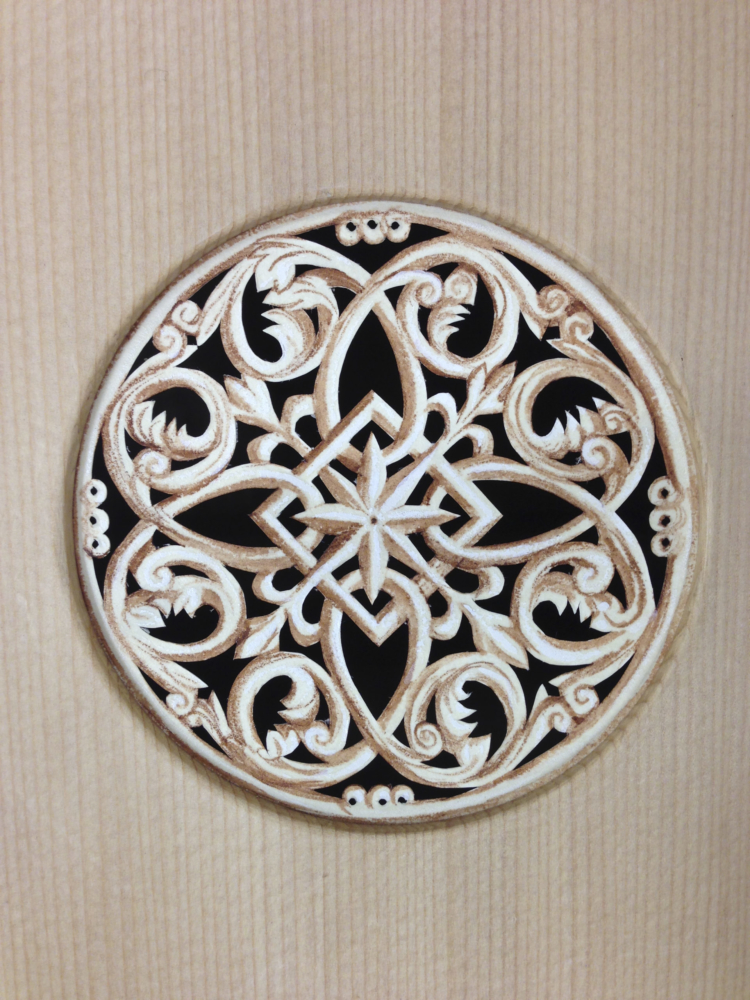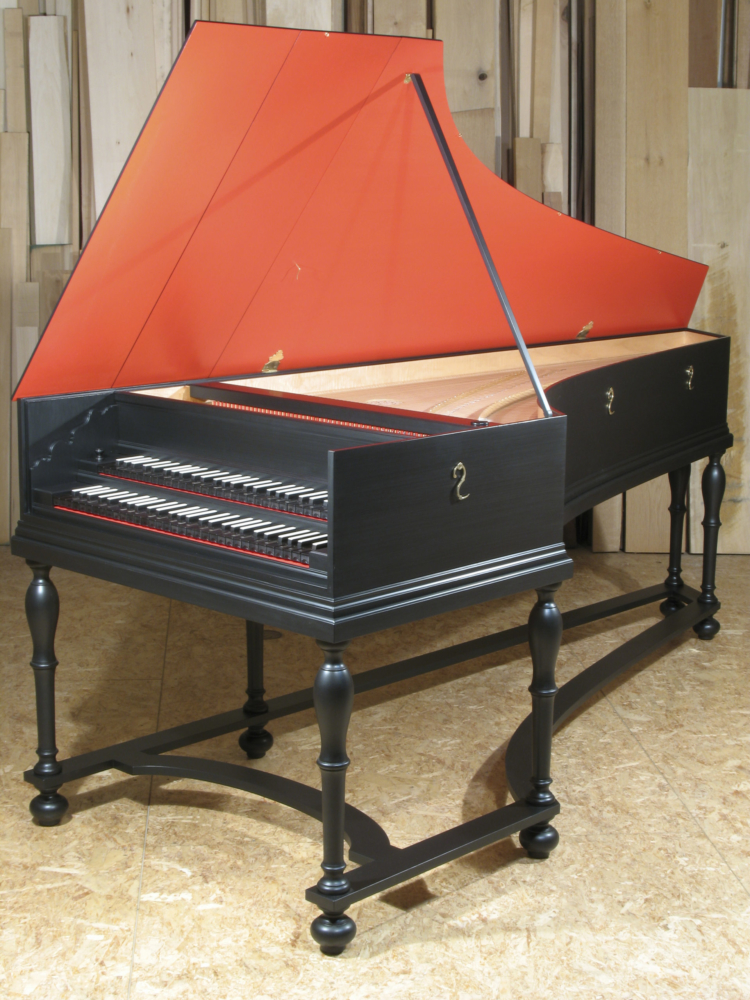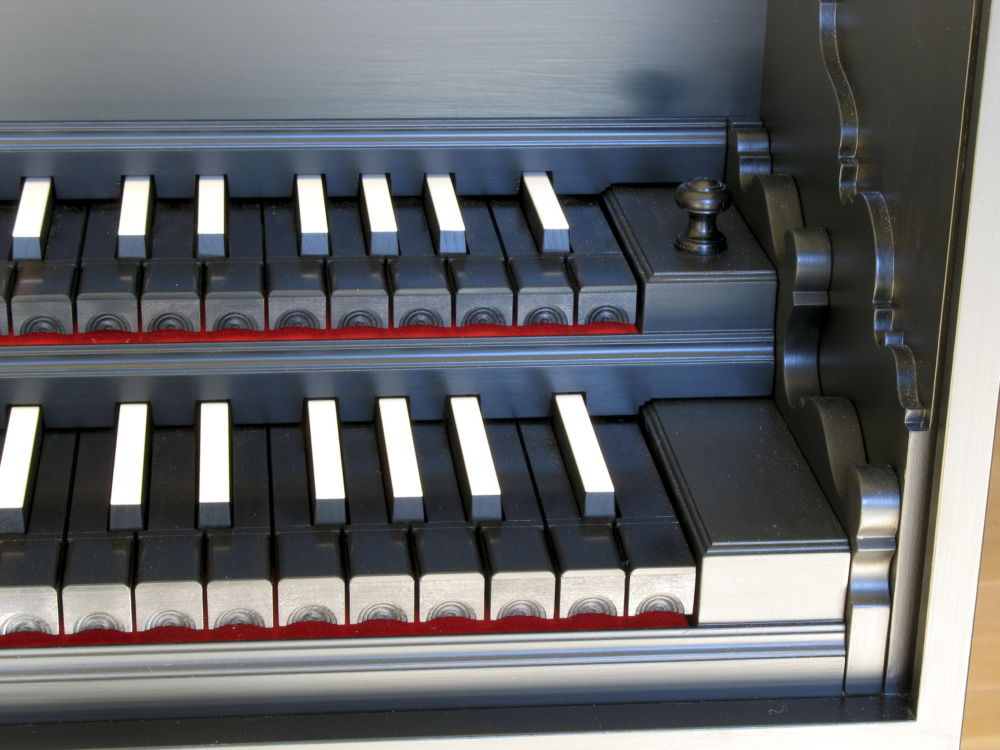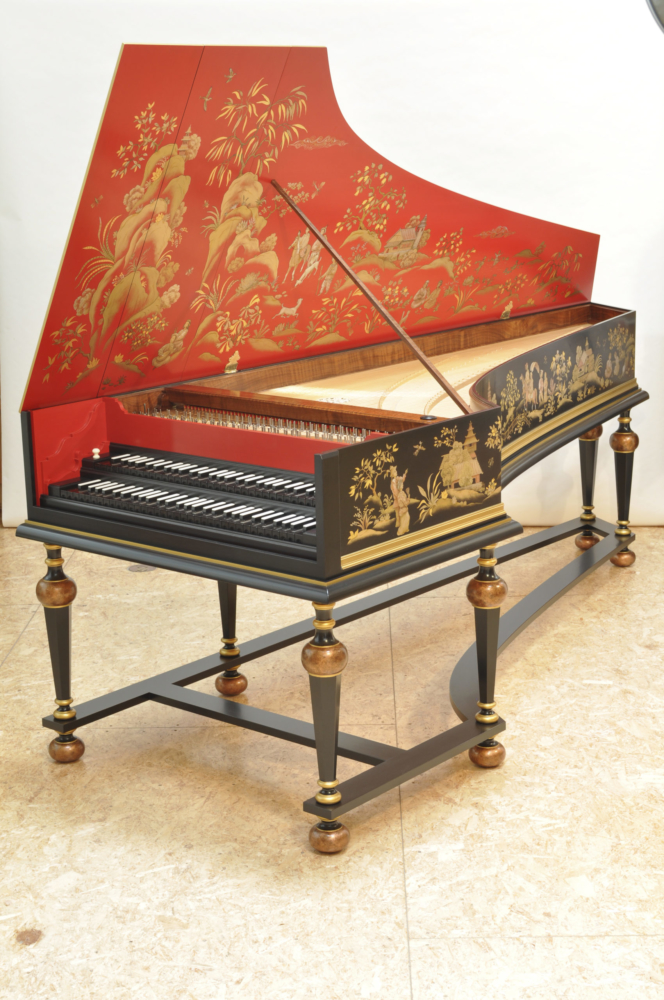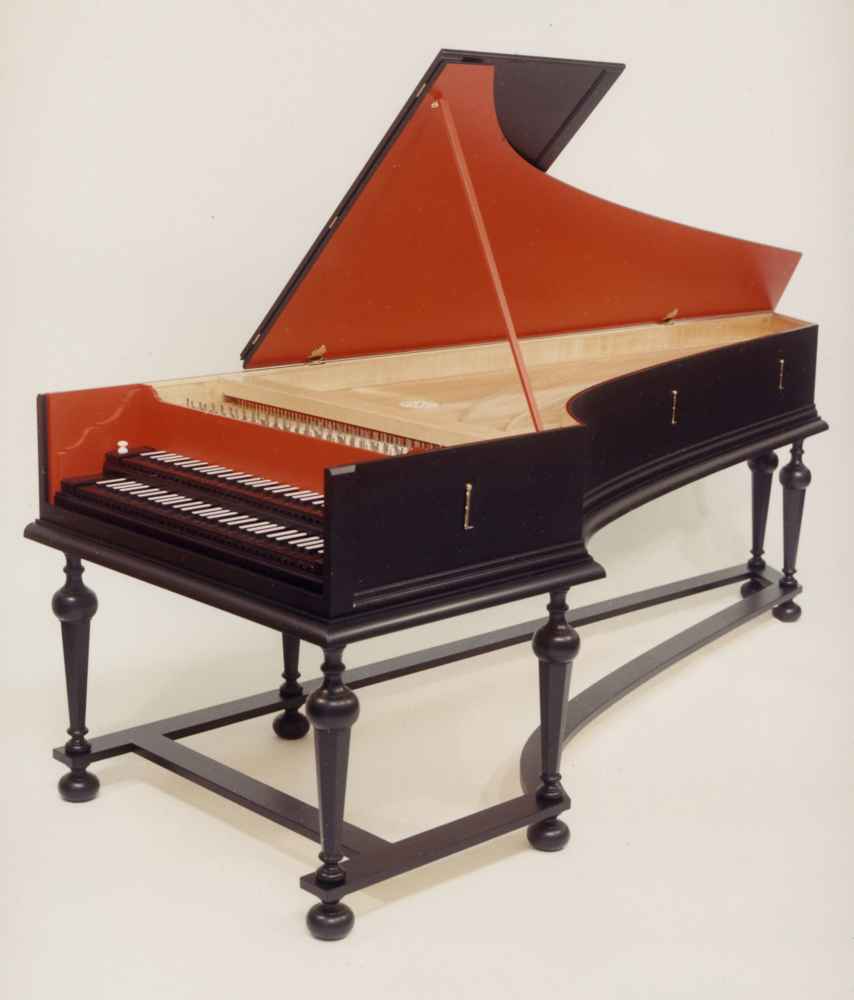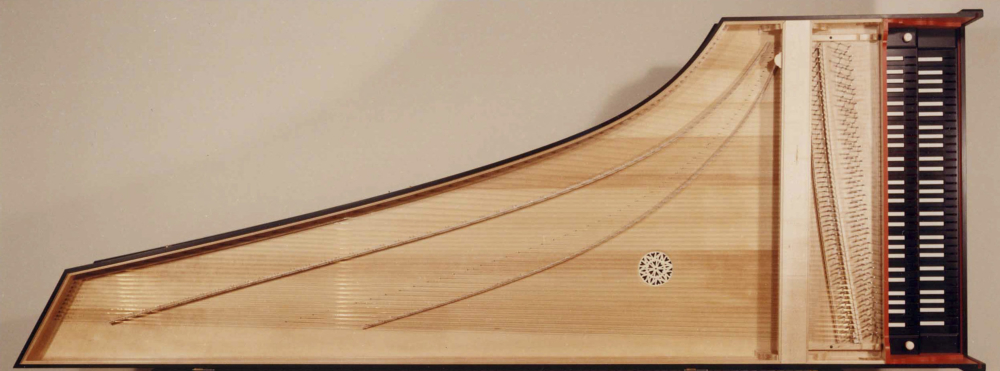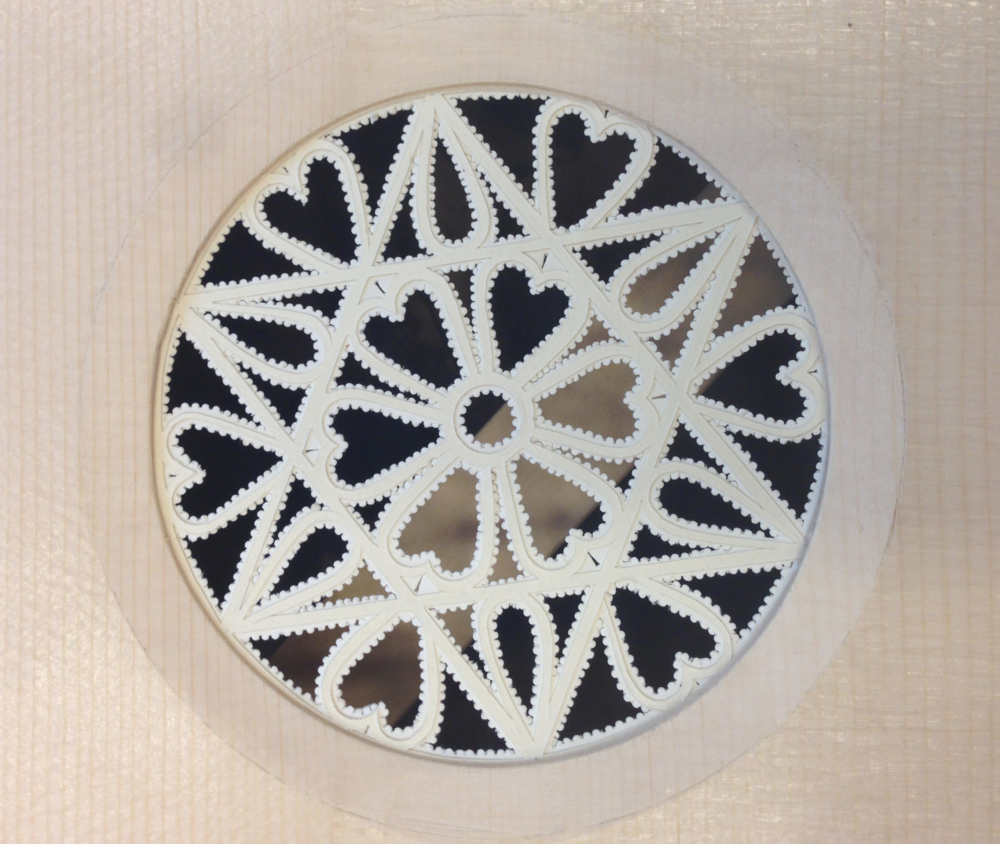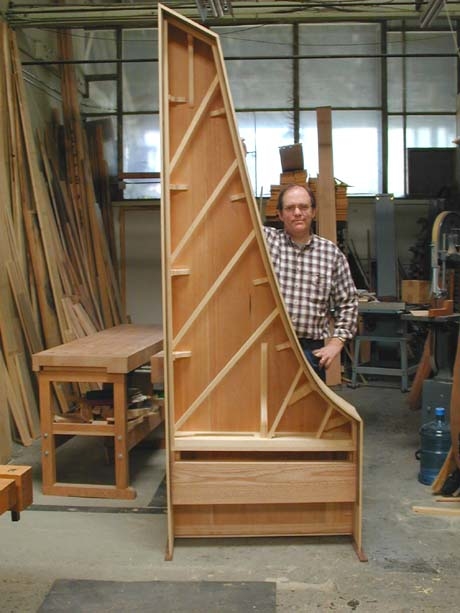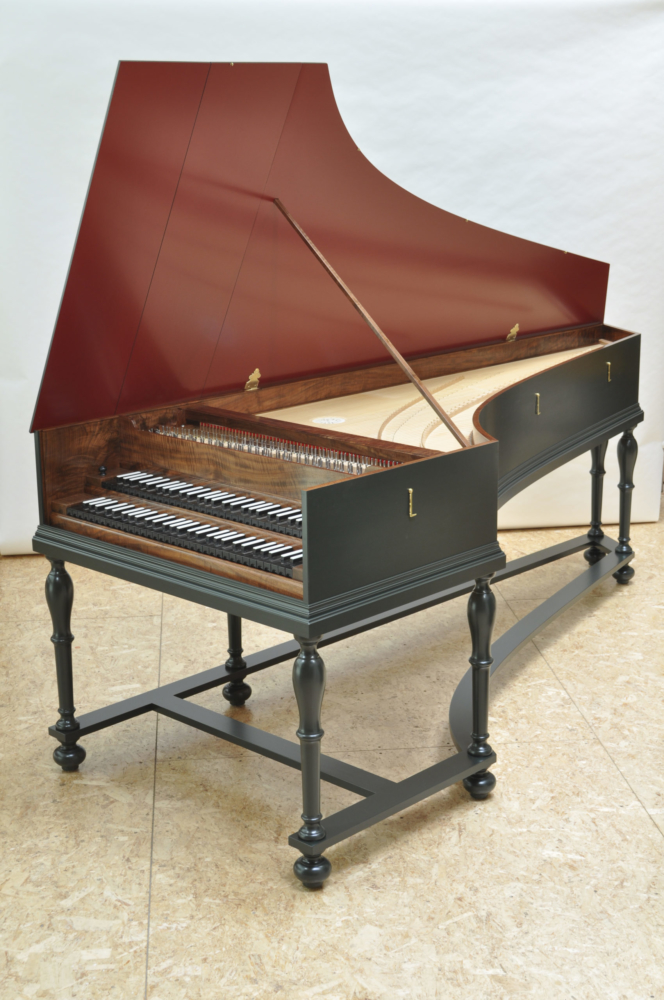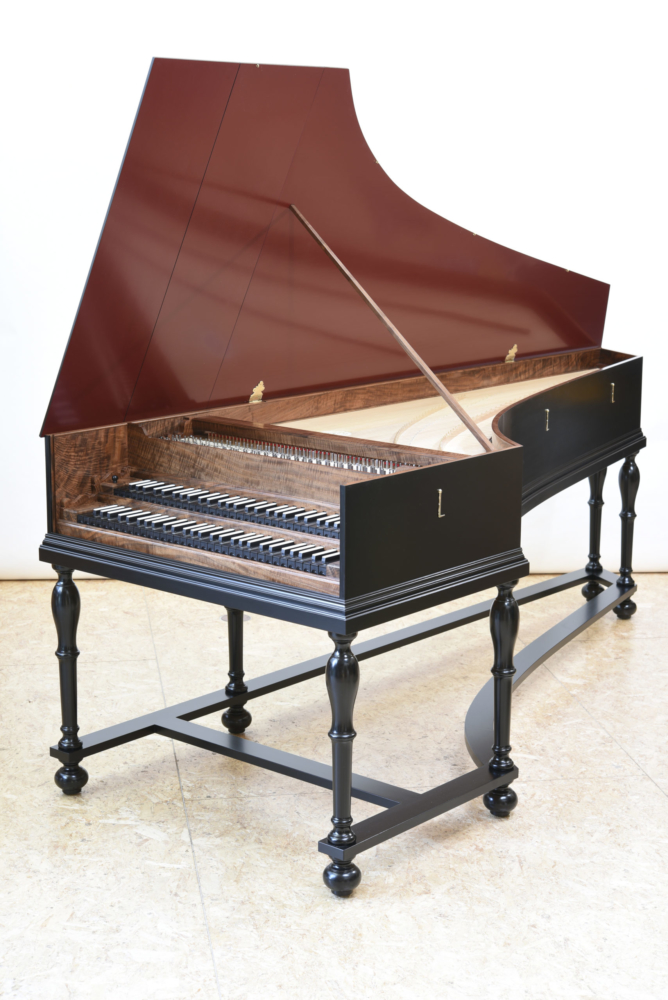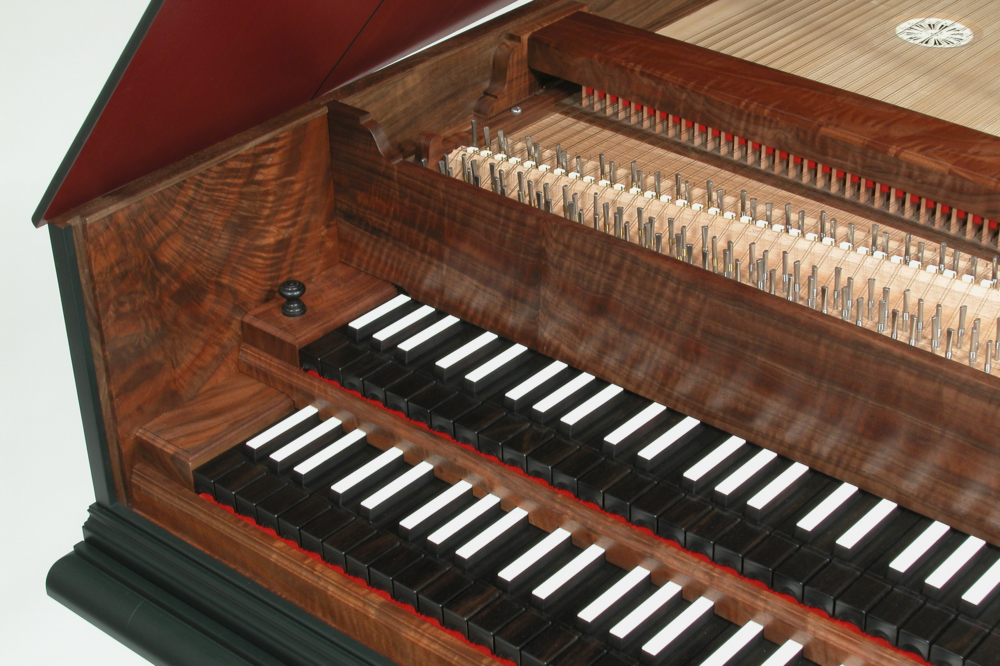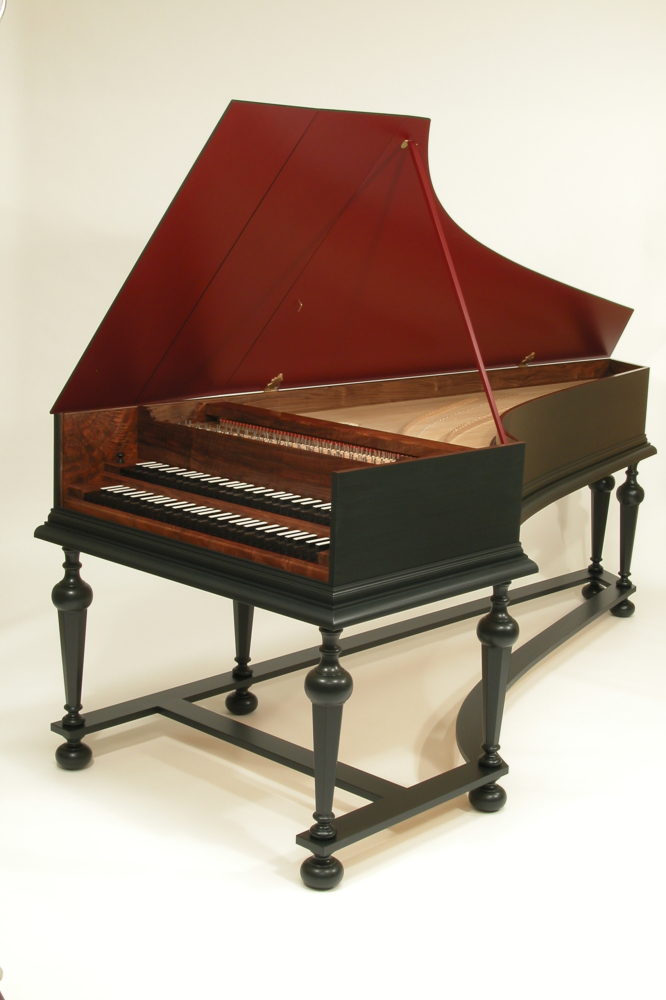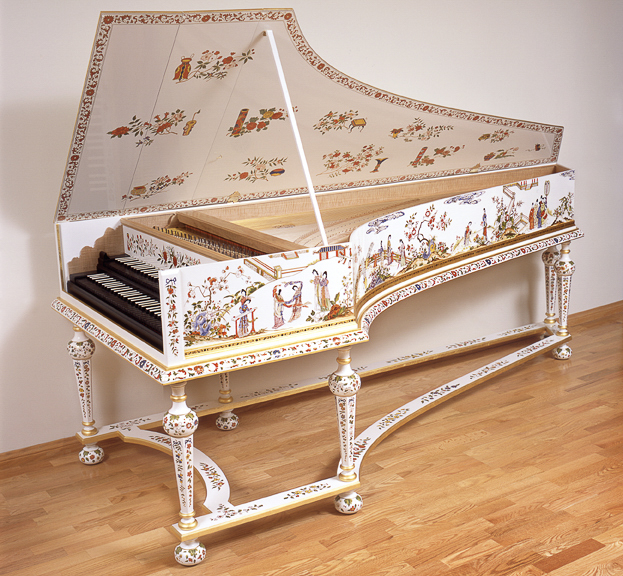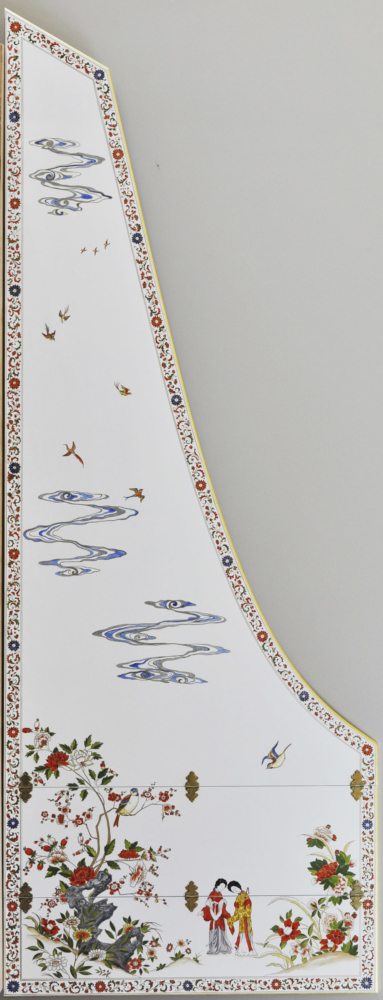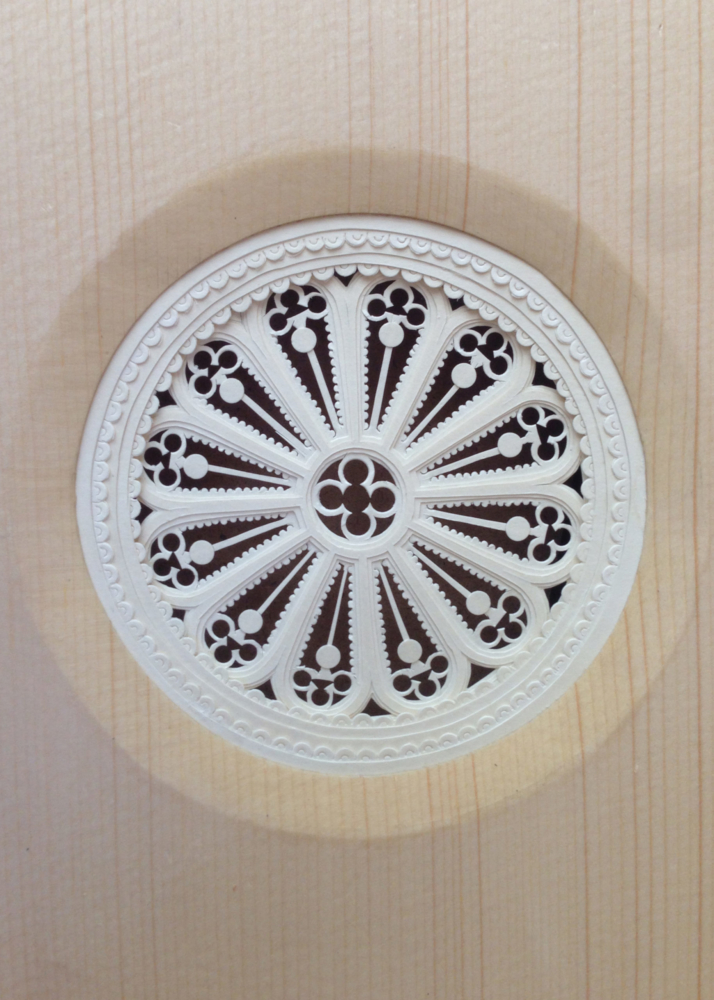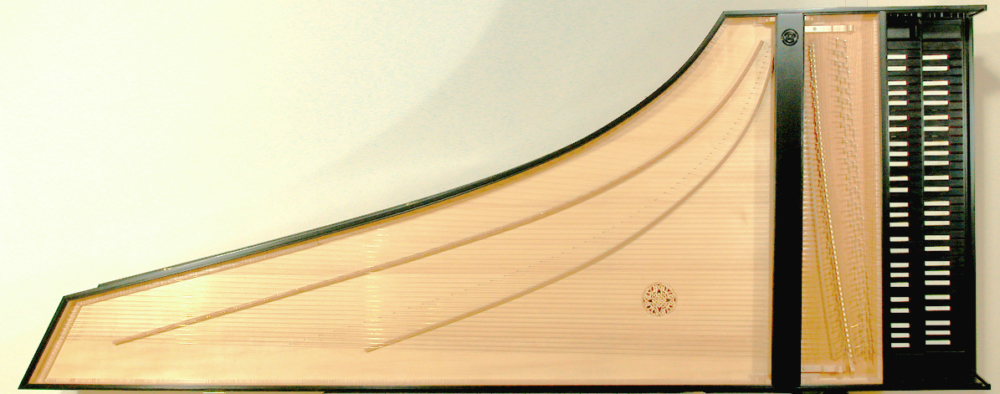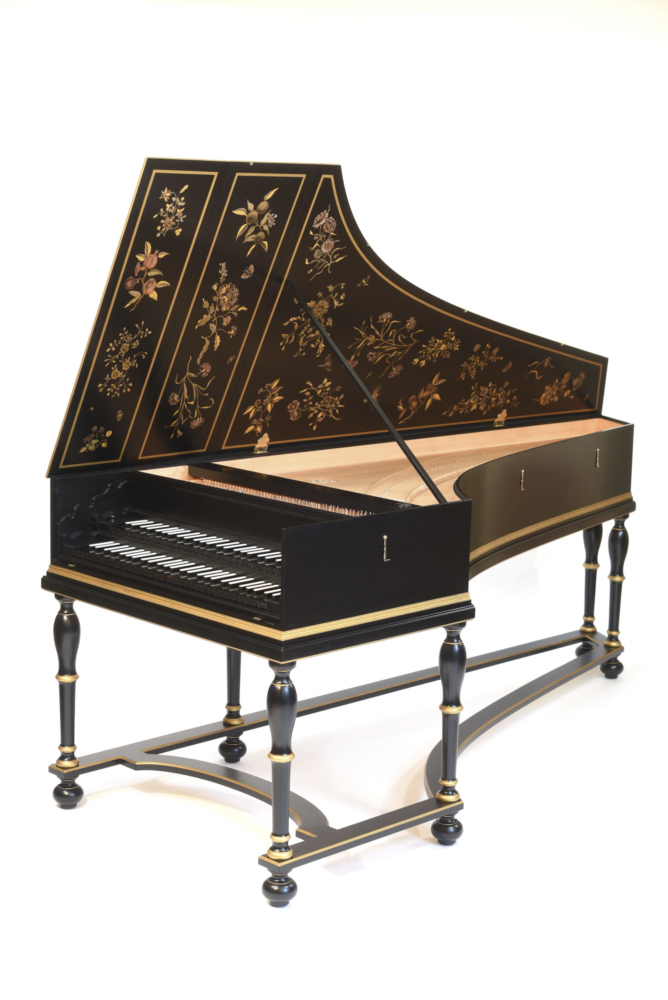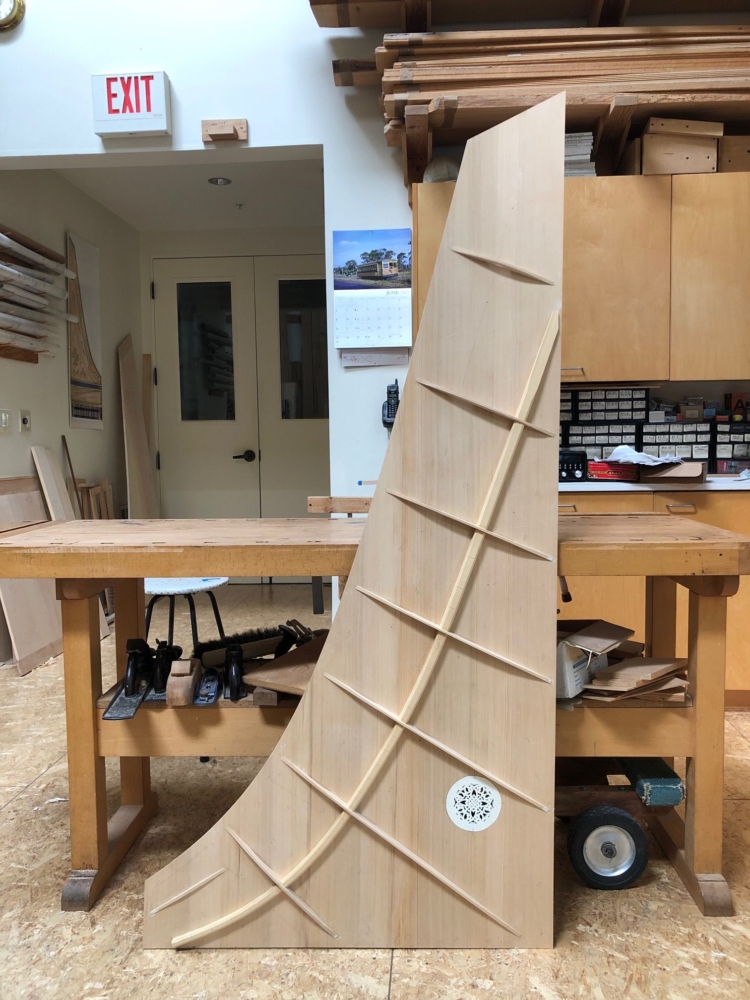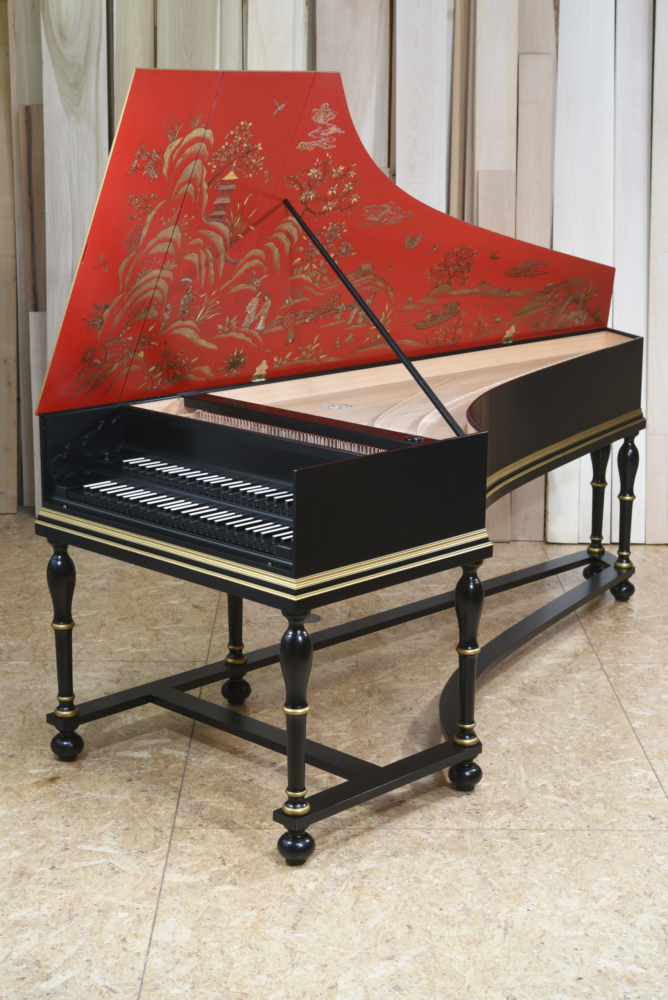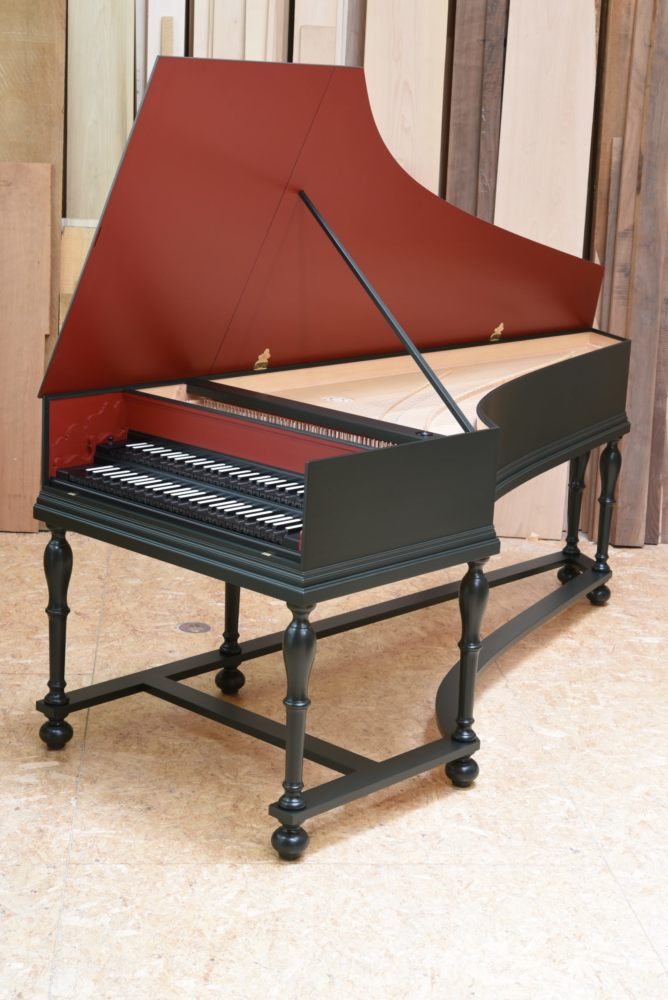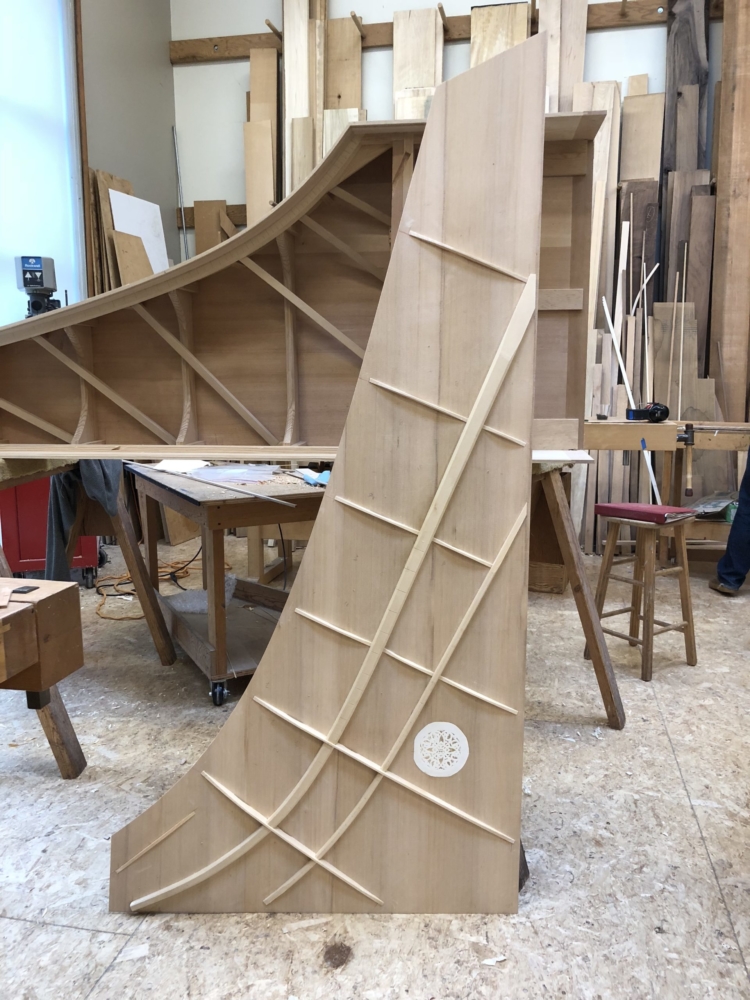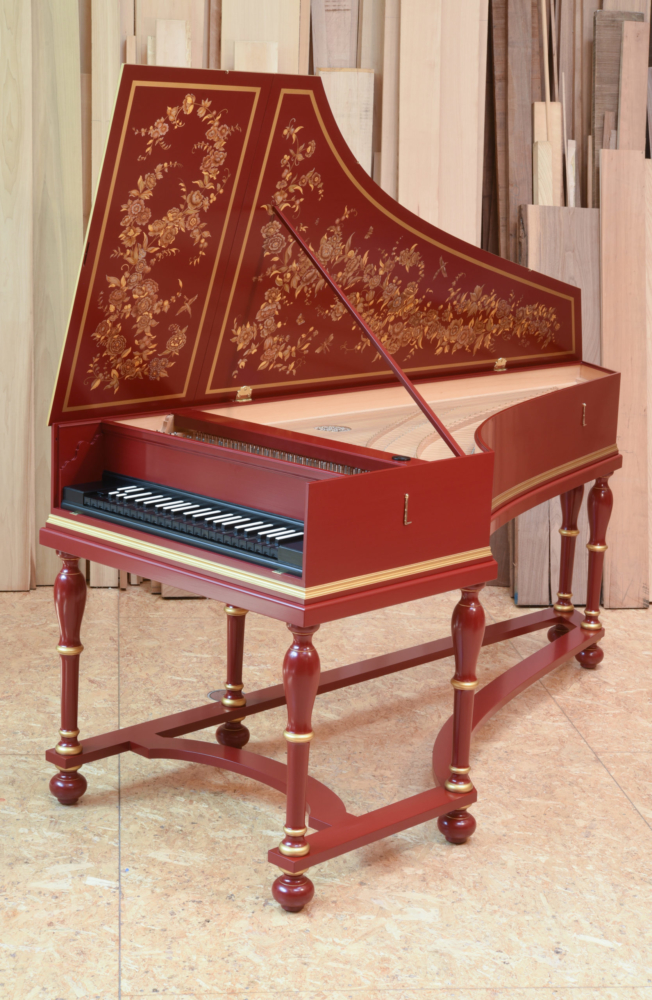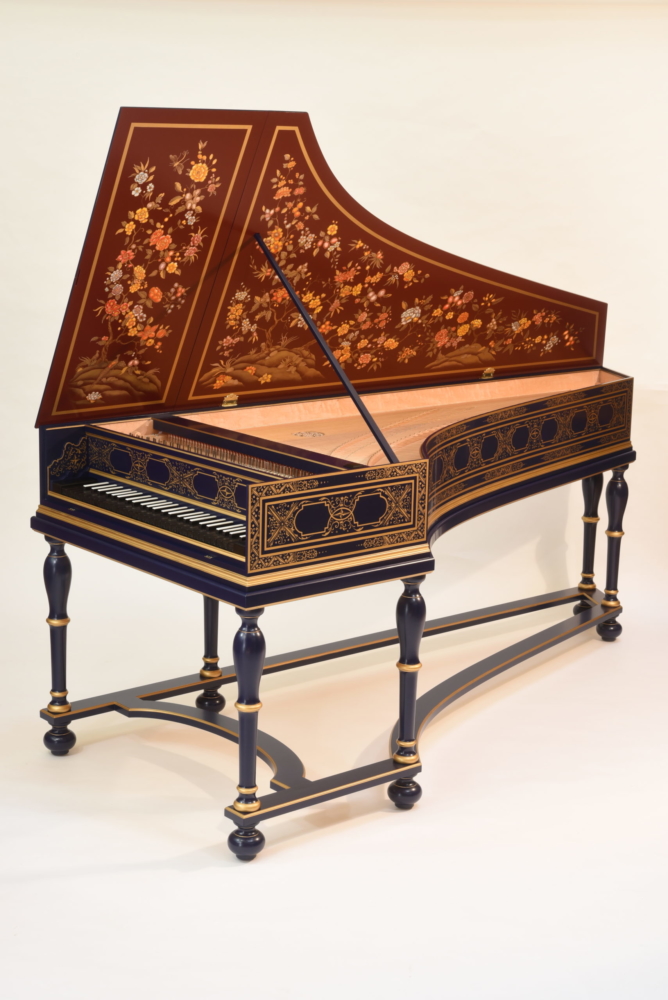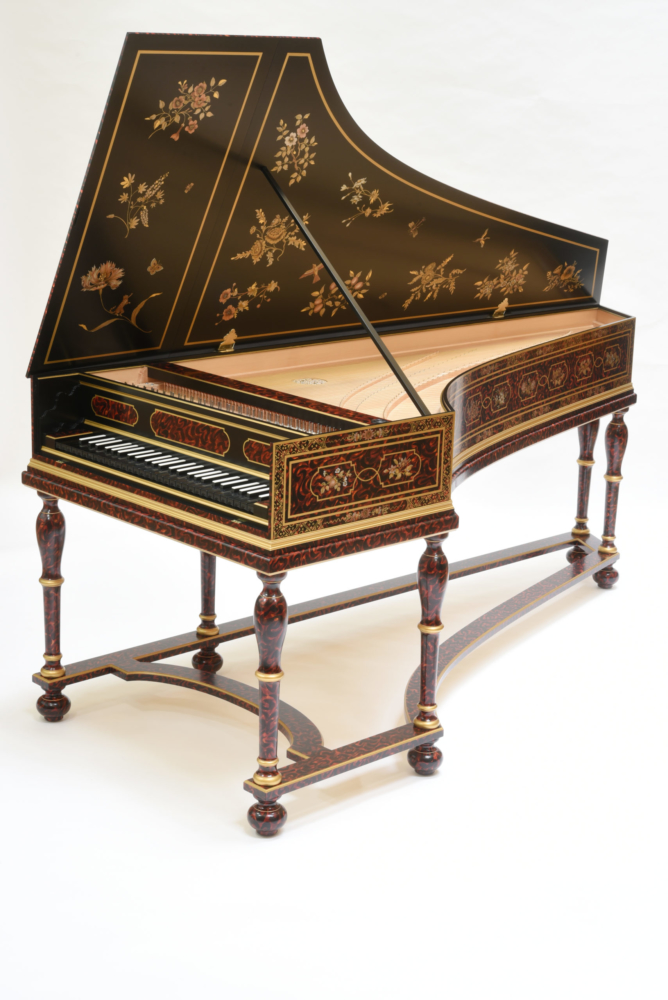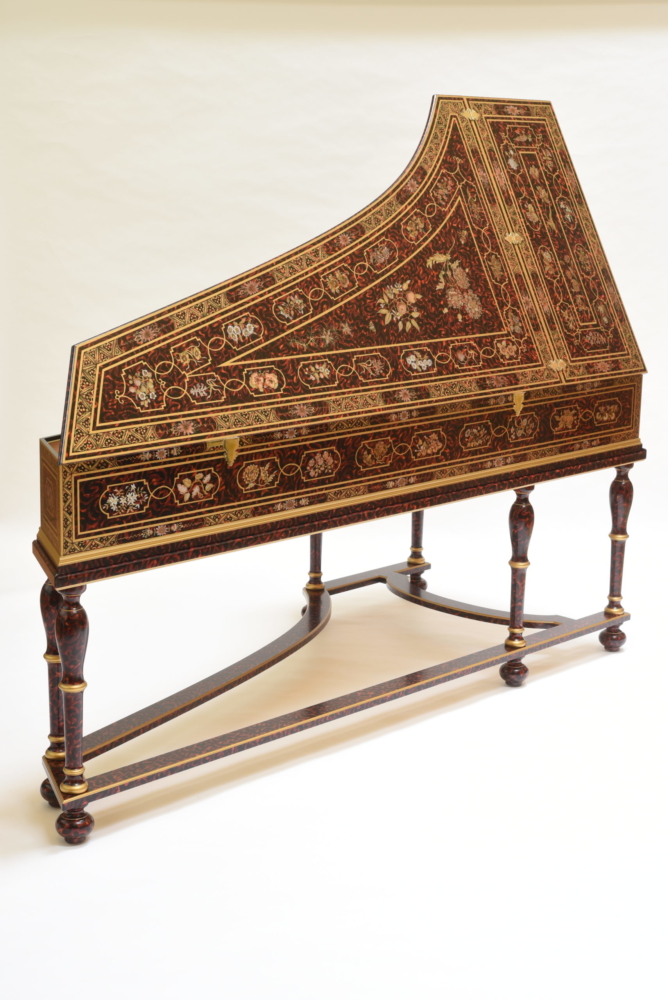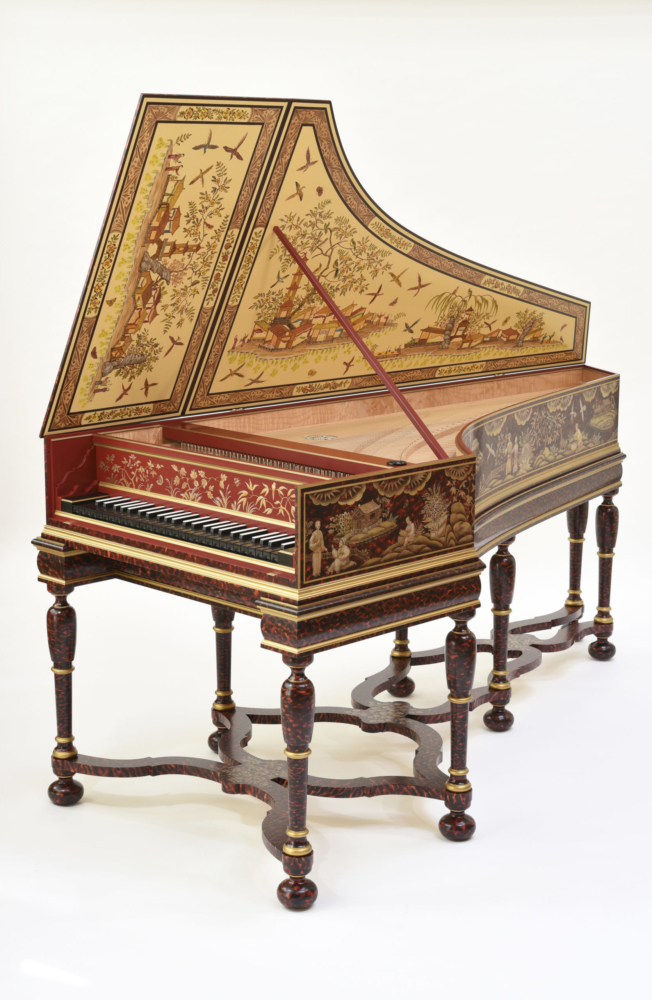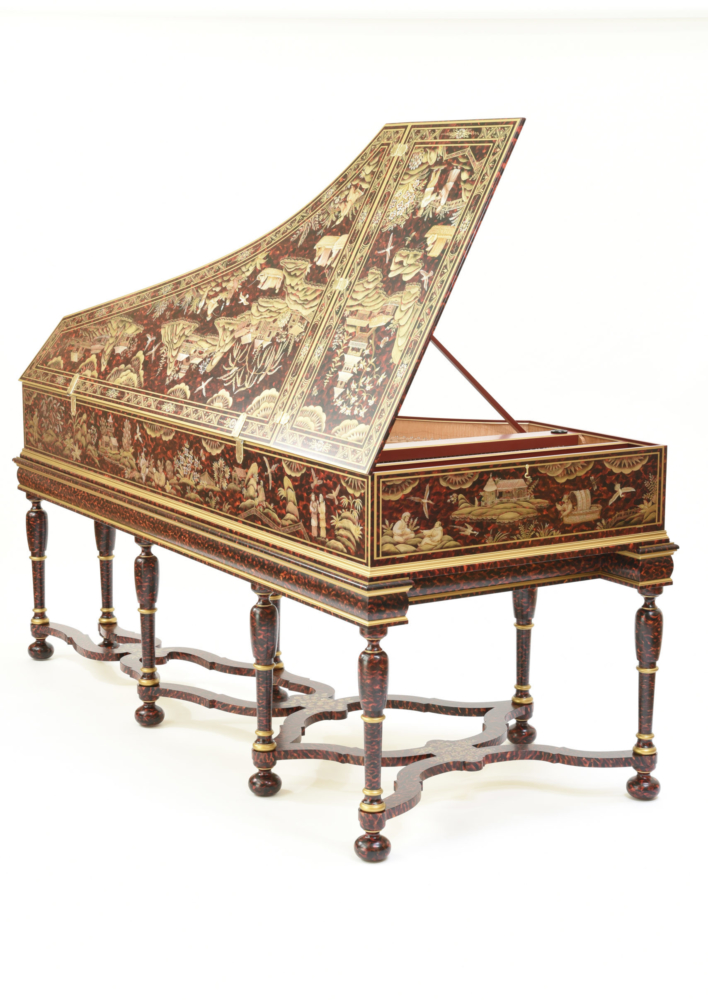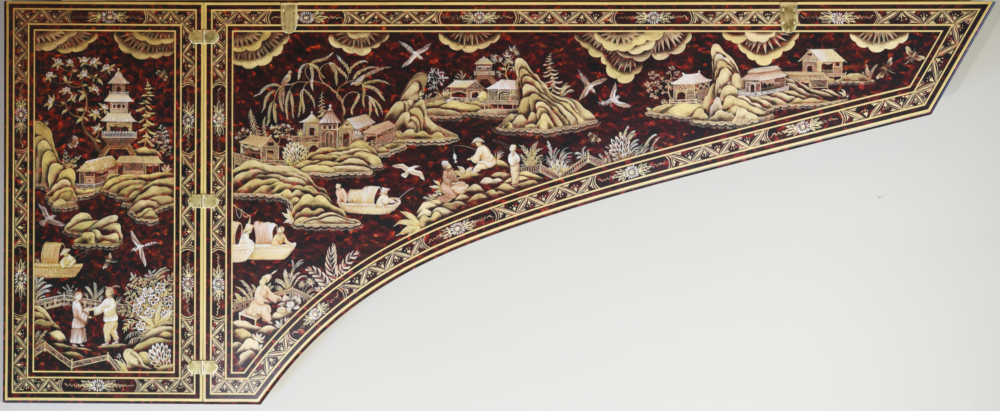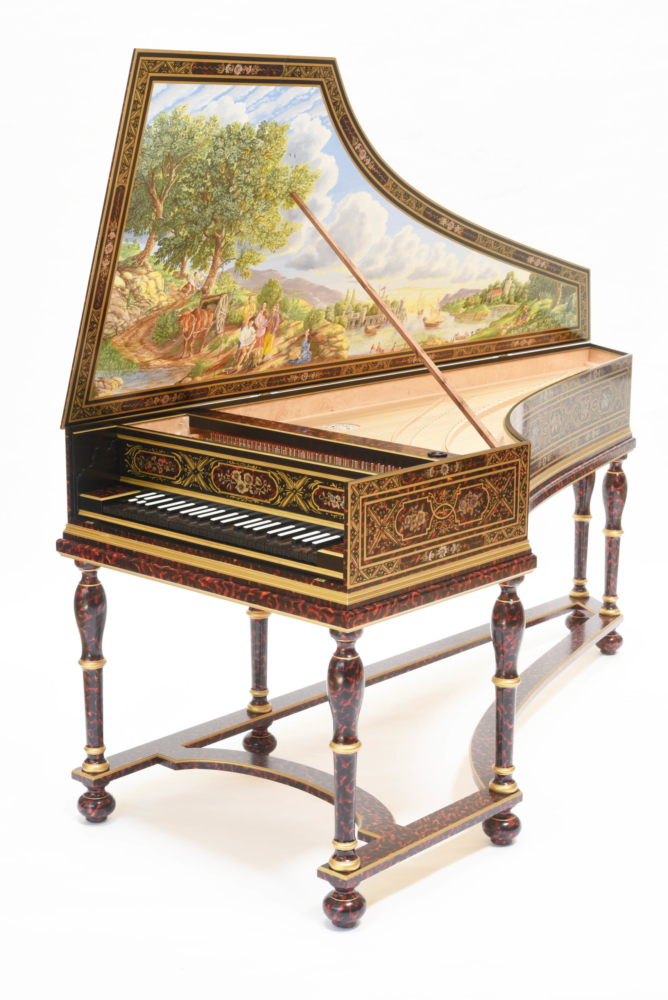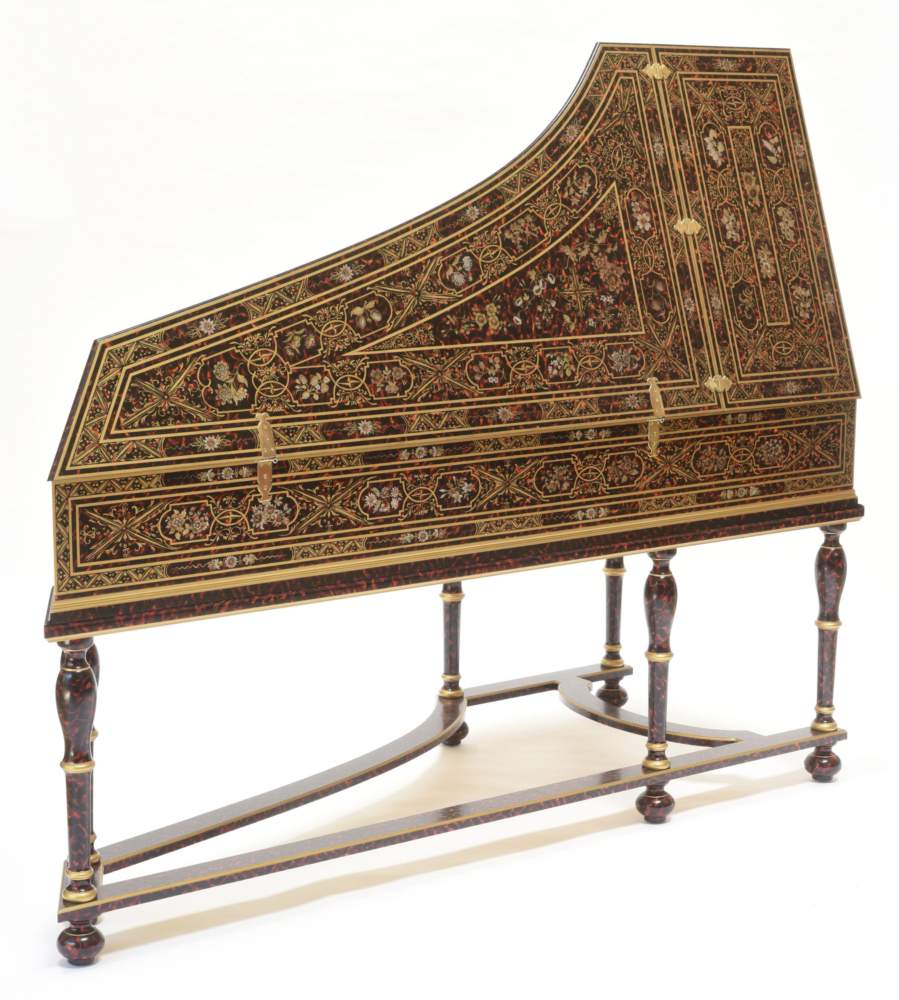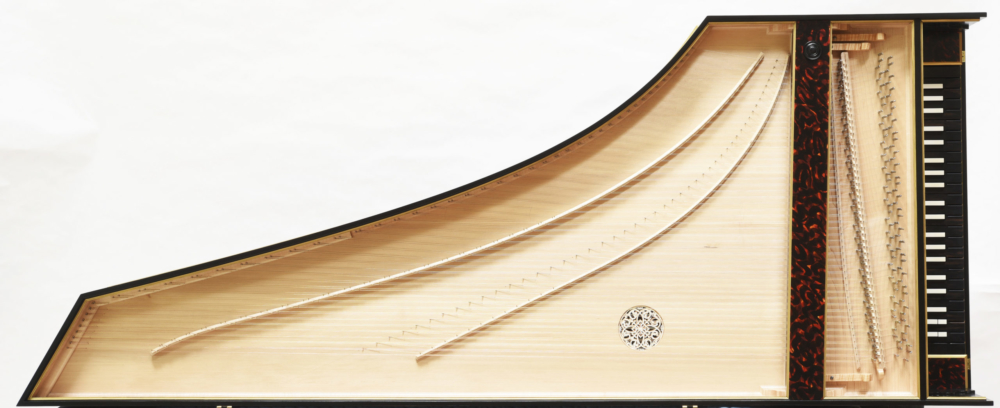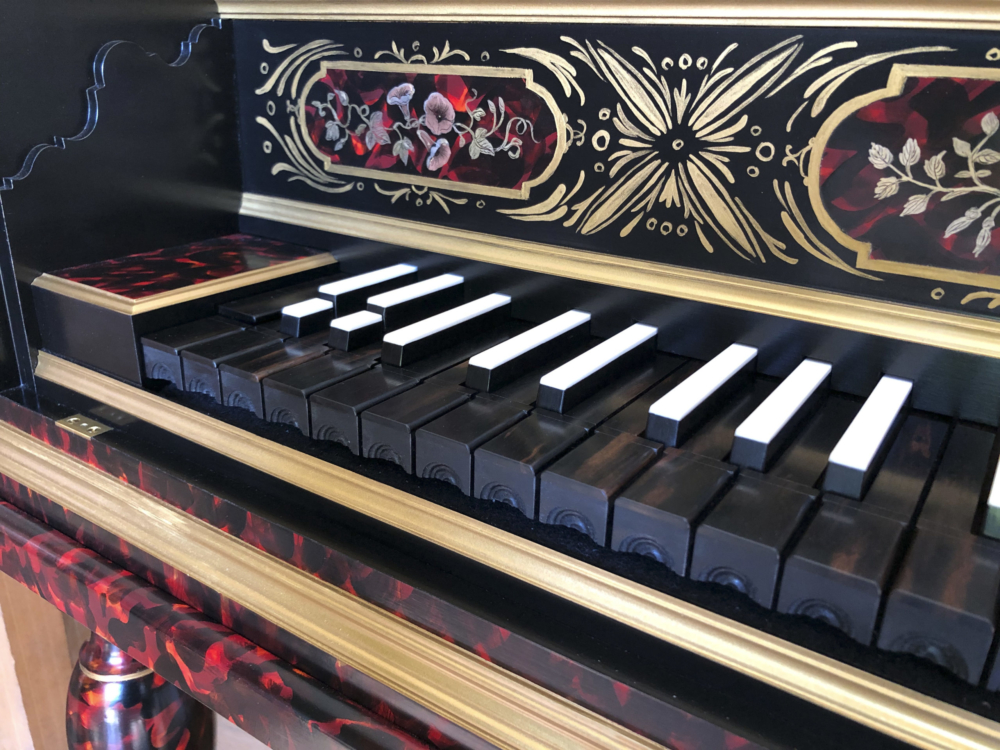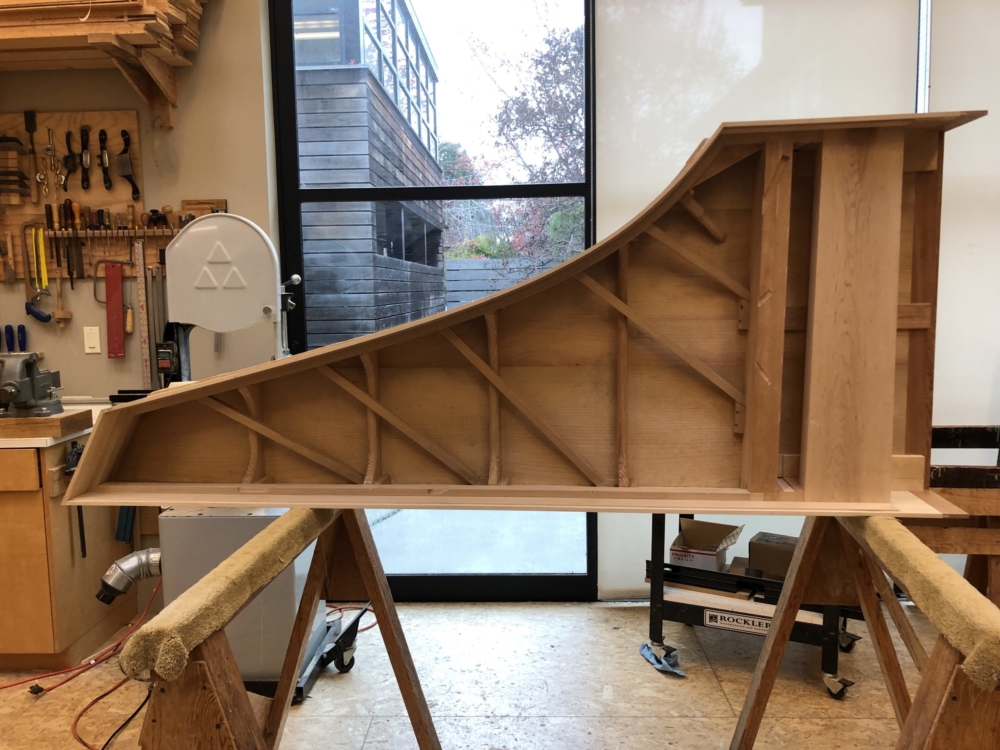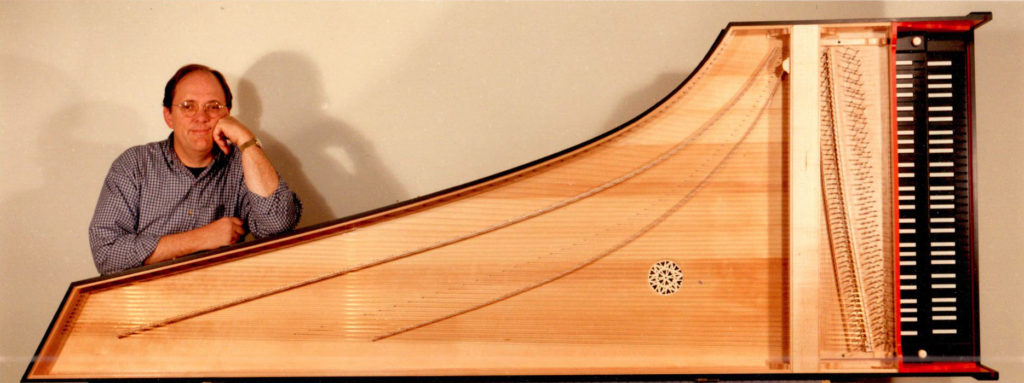
In the spring of 1998 I was asked if would make a copy of the 1739 Johann Heinrich Gräbner harpsichord for Stiftung Kloster Michaelstein in Blankenburg, Germany. The order came with introductions to the museums in Dresden, Leipzig, Prague, and Nuremberg, where the surviving Gräbner harpsichords are kept. It was an offer I couldn’t refuse. Our first Gräbner was both an eye and ear opener. In the ensuing two decades, half of our new instrument production has been various sorts of Gräbners.
For five generations from the 17th well into the 19th centuries the Gräbner family in Dresden built and repaired organs, harpsichords, clavichords and ultimately pianos. Several family members were tuners and instrument makers for the Saxon court as well as prominent professional musicians. One, Christian Heinrich, studied organ with J. S. Bach in Leipzig, who surely knew the Gräbner instruments. Four double manual harpsichords and a small number of clavichords and pianos by family members are known to survive. For more information on the family, please see my entry “Gräbner” in the New Groves Dictionary of Musical Instruments.
The Gräbner harpsichords are iron-strung in the treble and feature an unusual, non-Pythagorean scale design. The sound of these instruments is unique, with colors suggestive of the organ. Their clean articulation and remarkable clarity in all registers and make them perfect both for continuo and the works of J. S. Bach and other German masters.
We offer several different versions of Gräbner harpsichords, ranging from copies to reconstructions to invented instruments based on the family’s design principles. The doubles all have the “French” disposition of lower manual: 1×8′, 1×4′, upper manual: 1×8′, buff, and a shove coupler. The keyboards have ebony naturals and bone-topped accidentals. The exterior of the instrument, and the lid are painted. The case interior above the soundboard has soundboard wood, maple, or walnut veneer and Italianate moldings. The undecorated soundboard features a cut paper rose. The instrument rests on a framed table stand with six turned legs, painted to match the case.
Copies of Gräbner harpsichords:
1722 Johann Heinrich Gräbner Sr., formerly preserved at the Villa Bertramka Mozart museum in Prague. This instrument was much altered in the 18th century and again in the late 19th century and has a dubious association with Mozart and Don Giovanni. We have reconstructed it’s 1722 state with the original keyboard compass of FF- d3 .This would have been the largest harpsichord available to Bach in the 1720s, contemporary with Well-tempered Clavier, Book 1 and the six keyboard Partitas.
Range: FF-d3
Disposition: Lower manual 1×8′ and 1×4′. Upper manual 1×8′, buff, and shove coupler
Dimensions: 8’4” x 3’2” (255 cm x 95 cm)
1739 by Johann Heinrich Gräbner Jr, preserved in the Kunstgewerbemuseum, Dresden, at Schloss Pillnitz. The unusual keyboard range of DD-d3 suggests that it was intended for large ensemble continuo use, perhaps at the Dresden Hofkapelle or opera. It is the unique survivor of such large harpsichords often mentioned in inventories, advertisements, and other secondary sources. This is our largest harpsichord.
Range: DD-d3
Disposition: Lower manual 1×8′ and 1×4′. Upper manual 1×8′, buff, and shove coupler
Dimensions: 9’0″ x 3’3” (273 x 99cm).
Models in the style of Gräbner:
Five octave double
Because the two surviving FF-f3 Gräbner harpsichords from 1774 and 1782 reflect more the musical sensibilities the generation of Bach’s sons than of his own, I took the basic design principles evident in all four survivors to reconstruct what might have been the first five octave Gräbner harpsichord from the 1740’s, with the “French” action found in the 1722 and 1739 instruments, but enough notes to play all the later repertoire.
Range: FF-f3
Disposition: Lower manual 1×8′ and 1×4′. Upper manual 1×8′, buff, and shove coupler
Dimensions: 8’6” x 3’3” (265 x 99cm).
Small doubles:
Since all the surviving Gräbners and their copies are large and heavy instruments, I saw a need for more practical smaller versions. The small double is based on the scale and design principles of the 1722 Gräbner, but with reduced bass range and a shallower case. The keyboard range is GG-d3; enough notes for virtually all the works of Bach. A slightly larger version of this instrument extends the treble range to e3 and can accommodate the two mirror fugues in the Art of Fugue, as well as the early Sonatas of C. P. E. Bach and others.
Disposition for all models: Lower manual 1×8′ and 1×4′. Upper manual 1×8′, buff, and shove coupler
Range: GG-d3
Disposition:
Dimensions: 7’11” x 3’ (240 x 92cm)
or
Range: GG-e3
Disposition: Lower manual 1×8′ and 1×4′. Upper manual 1×8′, buff, and shove coupler
Dimensions: 8’1’ x 3’1” (246 x 94cm)
Singles:
Our Gräbner singles are inspired by the two Christian Zell singles of 1737 and 1741, but follow the scale and design principles of the 1722 double. They are offered in three different sizes and keyboard compasses of GG, AA-d3, BB-d3, and AA, C/E- c3. The keyboard compass of the smallest here is designed to accommodate music of Froberger, Buxtehude and their compatriots.
Disposition for all models 2 x 8’, 1x 4’ with a buff stop
Range: GG, AA-d3
Dimensions: 7’5’ x 3’ (226 x 92cm)
or
Range: BB-d3
Dimensions: 7’ 1” x 2’10” (216 x 86cm)
or
Range: AA, C/E-c3
Dimensions: 6’ 11” x 2’8” (211 x 82cm)

